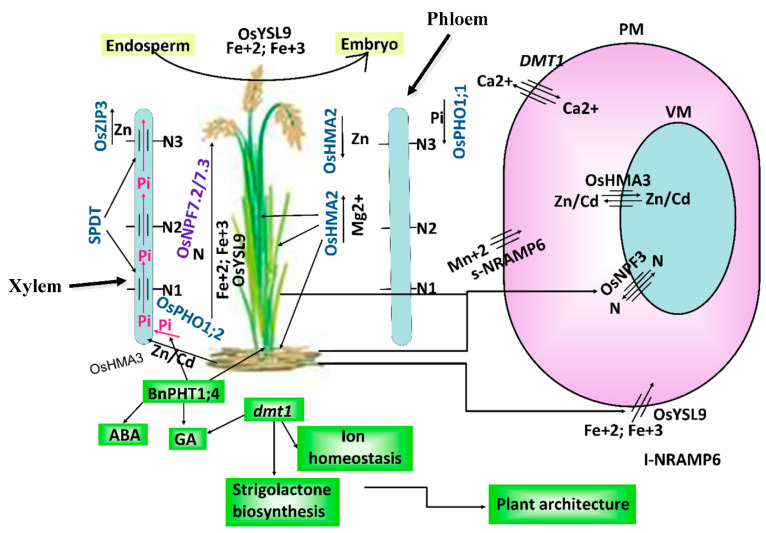Figure 1.
A thematic model on the role of membrane transporters in improvement of plant architecture, seed yield, and transportation of mineral elements and ion homeostasis. Figure shows that OsYSL9 is localized at the plasma membrane (PM) and translocated Fe+2 and Fe+3 ions from roots to upper plants parts and also exported these ions from the endosperm to embryo, resulting in enhanced grain quality. Several OsNPF genes are involved in the transportation of nitrogen towards leaf and, hence, play a role in N use efficiency (NUE). OsPHO1;2 and BnPHT1;4 transported the available phosphorus (Pi) from the roots to xylem (xylem loading) and then SPDT export Pi across the nodes. Here, BnPHT1;4 also upregulate the genes involved in the pathways of ABA, and GA resulted in the improvement of plant growth and regulation. Similarly, OsHMA3 localized at the vacuolar membrane (VN), which is involved in maintaining Zn/Cd homeostasis and transporting Zn/Cd from root to xylem, and from there onward, the OsZIP3 gene unloads Zn from xylem to grains. OsHMA2 is expressed in roots, stem and leaves exported Mg2+ across the xylem towards upper parts and translocated Zn in last node towards lower parts across phloem. Lastly, the OsDMT1 gene localized at the PM and transport Ca2+. However, in mutant plants (dmt1) upregulation of GA, balancing of ion homeostasis and increased strigolactone biosynthesis processes were observed, which resulted in the overall improvement of plant architecture. For further details about articles used to make the above model, readers can refer to [23,25,26,27,28,29,30,31,32,33,34].

